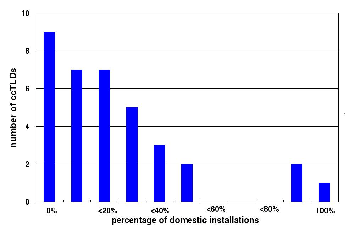Copyright is held by the author/owner(s). WWW 2006, May 23-26, 2006, Edinburgh, Scotland. ACM 1-59593-323-9/06/0005.
Abstract
The ccTLD (country code Top Level Domain) in a URL does not
necessarily point to the geographic location of the server
concerned. The authors have surveyed sample servers belonging
to 60 ccTLDs in Africa, with regard to the number of hops
required to reach the target site from Japan, the response
time, and the NIC registration information of each domain. The
survey has revealed the geographical distribution of server
sites as well as their connection environments. It has been
found that the percentage of offshore (out of home country)
servers is as high as 80% and more than half of these are
located in Europe. Offshore servers not only provide little
benefit to the people of the country to which each ccTLD
rightly belongs but their existence also heightens the risk of
a country being unable to control them with its own policies
and regulations. Offshore servers constitute a significant
aspect of the digital divide problem.
General Terms
Management, Measurement, Experimentation, Legal Aspects
Keywords
geographic location
of servers, offshore server, ccTLD, Africa, digital-divide,
traceroute, response time, number of hops, NIC registration
information.
